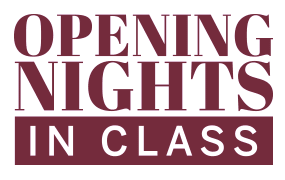
Experience the Power of the Human Voice with VOCES8
Recommended Grades: 6–12 | Engagement Date: February 13, 2026
Directions for the Teacher
This guide introduces students to VOCES8, a world-renowned British vocal ensemble celebrated for their stunning harmonies and diverse repertoire. Through listening and discussion, students explore how the human voice connects cultures, time periods, and emotions.
Student responses may be spoken, written, drawn, or performed, accommodating various ages and abilities.
Watch & Listen
Explore VOCES8’s stunning vocal performances from different eras and styles. Use the discussion prompts to inspire curiosity about harmony, expression, and music’s power to connect across cultures and time.
“Sleep” by Eric Whitacre
Experience the gentle harmonies and soothing mood that create a peaceful, dreamy atmosphere.
“Lux Aeterna” from Nimrod by Edward Elgar
Notice the rich vocal textures and serene mood that evoke a sense of calm and reverence.
“Buccinate in Neomenia Tuba” by Giovanni Croce
Enjoy this lively Renaissance piece with bright vocal interplay and festive energy.
Discussion Prompts
- What feelings or images come to mind when you listen to each piece?
- How do the different vocal styles shape the mood and meaning?
- What similarities and differences do you notice between the Renaissance and contemporary works?
- How does singing together connect people across history and cultures?
Activities & Extensions
- Vocal Exploration: Experiment with singing in small groups. Try harmonizing or imitating the styles you heard.
- Creative Writing: Write a poem or story inspired by the mood or themes of one of the songs.
- Cultural Research: Investigate one musical style VOCES8 performs (e.g., Renaissance, folk, or modern choral) and share what you learn about its origins.
- Movement & Expression: Create movements or gestures that express the emotion and rhythm of a chosen piece.
Relevant Standards
- MU.68.H.1.1: Describe the functions of music from various cultures and time periods.
- MU.68.C.1.1: Develop strategies for listening to unfamiliar musical works.
- MU.68.C.1.4: Identify, aurally, a variety of vocal styles and ensembles.
- MU.68.O.3.1: Describe how instrumentation and expressive elements convey mood and ideas in a musical work.
- MU.68.H.1.3: Describe how music has been influenced by various cultures.
- MU.912.H.1.1: Investigate and discuss how a culture’s traditions are reflected through its music.
- MU.912.H.1.4: Analyze how Western music has been influenced by historical and current world cultures.
- MU.912.H.1.5: Analyze music within cultures to gain understanding of authentic performance practices.
- MU.912.C.1.1: Apply listening strategies to promote appreciation and understanding of unfamiliar musical works.
- MU.912.C.1.4: Compare and perform a variety of vocal styles and ensembles.
- MU.912.O.3.1: Analyze expressive elements in a musical work and describe how choices support the composer’s or performer’s intent.
- MU.912.H.2.1: Evaluate the social impact of music on specific historical periods.
- SS.8.A.1.7: View historic events through the eyes of those who were there as shown in their art, writings, music, and artifacts.
- SS.912.H.1.2: Describe how historical events, social context, and culture impact forms, techniques, and purposes of works in the arts.
- SS.912.H.1.3: Relate works in the arts to various cultures.
- SS.912.H.2.4: Examine the effects that works in the arts have on groups, individuals, and cultures.
- SS.912.A.1.4: Analyze how images, symbols, and artwork may be used to interpret the significance of time periods and events.
| ‹ Educational Resources | ‹ Previous Guide | Next Guide › |
